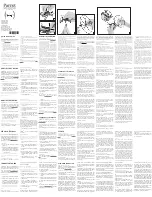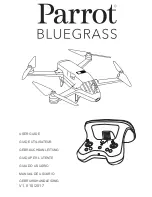
Planning and simulating a flight
eBee RTK
while it is in flight, such as starting the mission phase or hold-
ing position. It is also used to display and acknowledge warnings that may
occur either before or during a flight.
•
Toolbar:
The Toolbar contains buttons to control the layers, sources or map
information and other display options related to the Map Area.
eMotion
can
use many sources of mapping information. You can also choose your RTK
source from the pulldown menu and click
to Set Up RTK.
•
Sidebar:
The Sidebar is split into several tabs, each with a particular func-
tion. The Flight Monitoring tab is used for monitoring the drone while in
flight. The Setup Phase tab controls the take-off and landing portions of
a flight plan (referred to as the ‘setup phase’) whereas the Mission Plan-
ning tab defines the image acquisition portion of the flight plan (referred
to as the ‘mission phase’). The last three tabs are used for advanced way-
point planning and parameter setting. You can hide the Sidebar by clicking
on its left edge. The Sidebar also contains controls for the simulator when
connected to a simulated drone.
Your
eBee RTK
’s operating modes
Your eBee RTK can operate in several different modes:
Local Base, Precisely Known Coordinates
Create DSMs and orthomosaics with high absolute coordinate accuracy using your
precisely measured base station position as a GCP. Useful when a survey has al-
ready been done and reference points are already marked out. No post-processing
is needed to achieve RTK-level geo-tag accuracy.
•
Place your base station on a known reference point.
•
In
eMotion
, select the base station, set the reference point and base station
height.
•
eMotion
streams correction data to the drone through the ground modem.
23
Summary of Contents for EBEE RTK
Page 1: ...Extended User Manual eBee RTK Revision 3 December 2014 Copyright 2010 2015 senseFly Ltd ...
Page 14: ......
Page 71: ...Part II Advanced functionalities ...
Page 147: ...Part III Maintenance Repair and Troubleshooting ...
Page 182: ......
Page 183: ...Part IV Specifications ...
















































